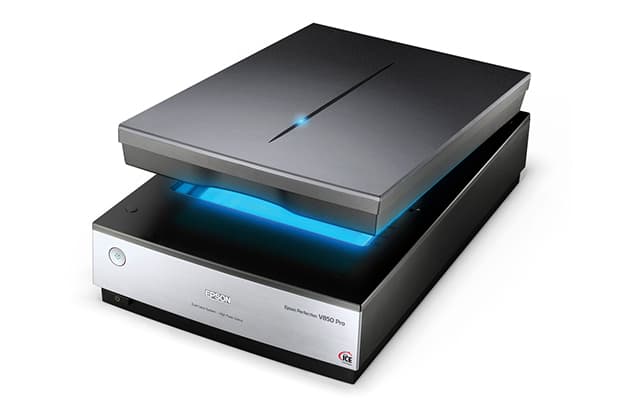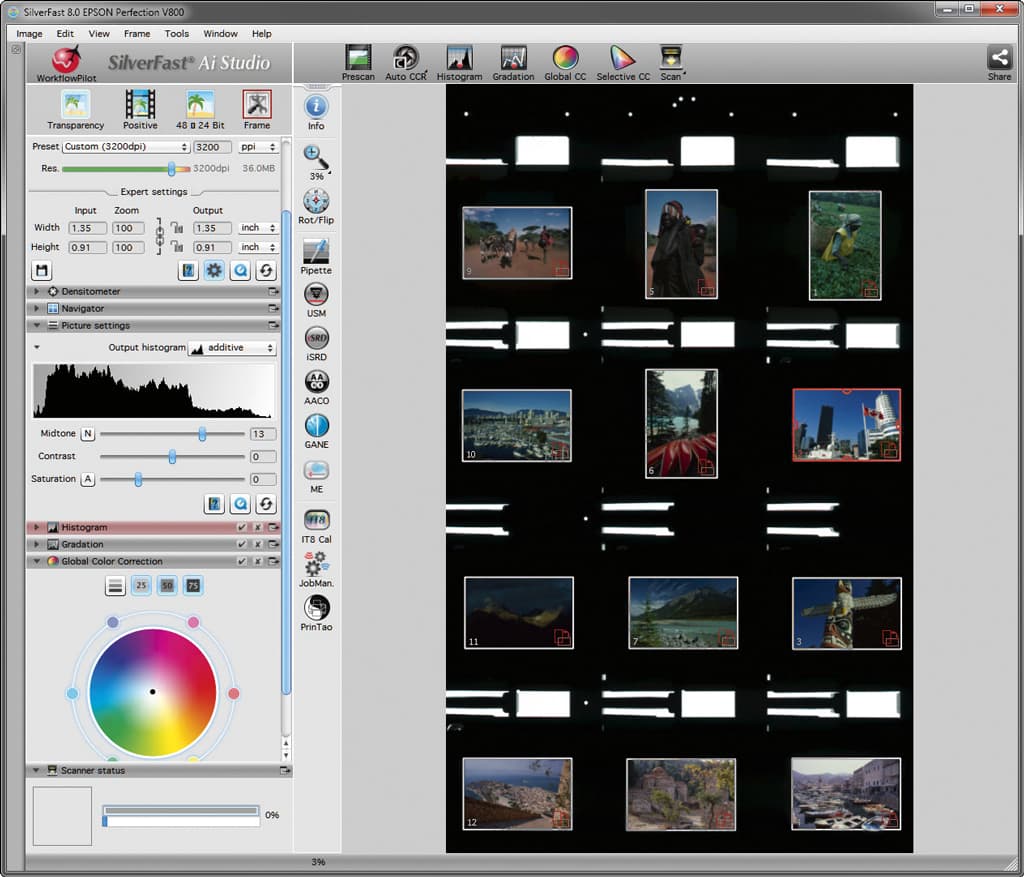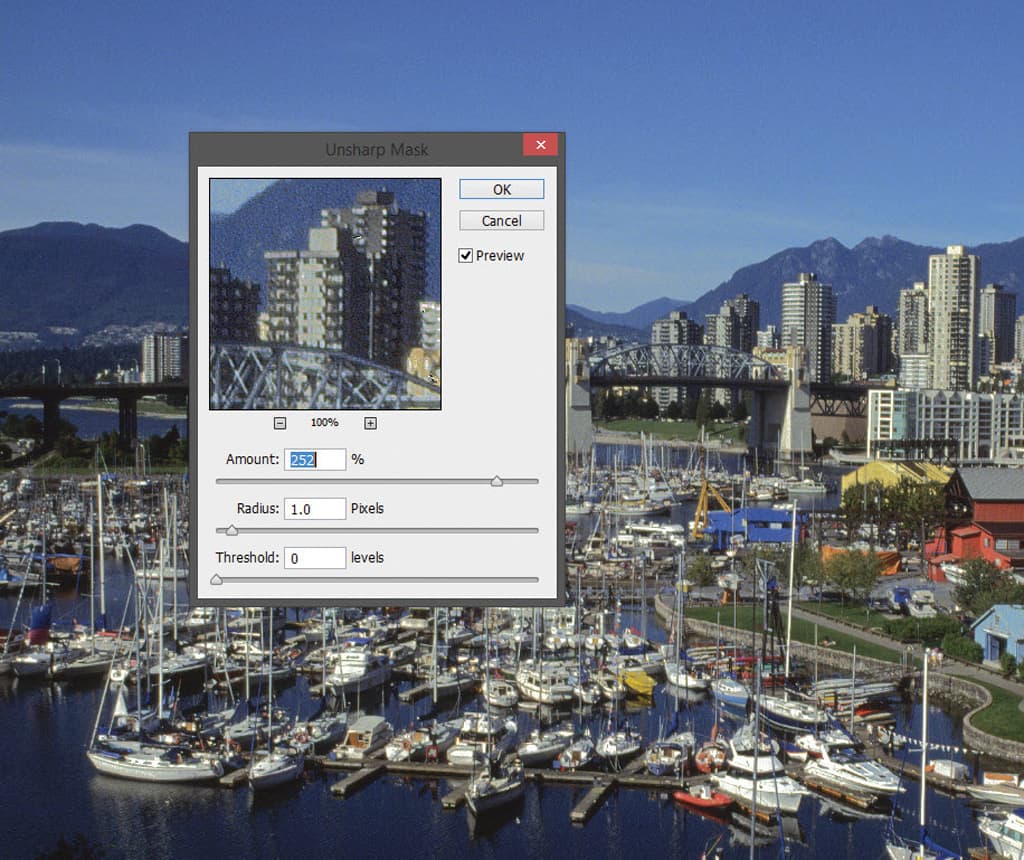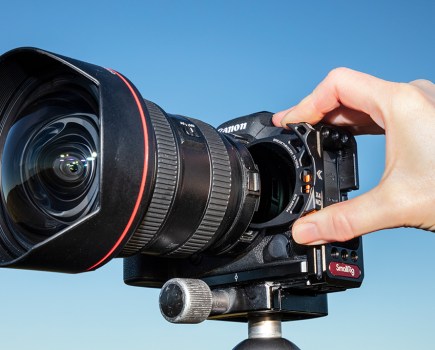Epson Perfection V850 Pro scanner at a glance:
- Price: £730 (V850), £550 (V800)
- Type: Flatbed scanner with film holders
- Light source: White LED, IR LED with ReadyScan LED technology
- Scanning resolution: 6400 x 6400 dpi
- Max scan area: A4
- Requirements: Mac OS 10.6+. Windows 7, 8, 8.1, Vista, XP SP2 or higher
- Dimensions: 50.3 x 30.8 x 15.2cm
- Weight: 6.6kg
It has been a long time coming, but with fewer people now shooting film it’s understandable that Epson has only just got around to updating its popular Perfection V750 Pro flatbed scanner with the new Epson Perfection V850 Pro scanner. The original V750 scannerset the standard for consumer flatbed scanners for a number of years, so the new V850 will be looked upon with interest by those who still shoot on film, particularly medium and large-format users.
As Epson’s top-of-the-range flatbed scanner, the V850 is designed specifically for keen hobbyist and professional photographers. As such, it comes with a whole host of accessories and software, including eight film holders for 35mm strips, mounted transparencies, medium format, 5x4in and even 10x8in sheet film. Also included is Epson Scan, Epson Event Manager, Epson Copy Utility, LaserSoft Imaging SilverFast SE Plus 8 SE and X-Rite i1 Scanner software.
Set-up
Anyone who has used a scanner before should have no difficulty with the Epson Perfection V850 Pro scanner, as its operation is quite straightforward. During the installation, the computer will be connected to Epson’s website to make sure that the latest drivers and software are downloaded and installed. The scanner itself is connected to a computer via a USB 2.0 connection. The previous V750 also had a FireWire port, but this is not included on the V850. Although USB 2.0 should be fast enough, it is a pity Epson didn’t use the faster USB 3.0, which is also backward-compatible with USB 2.0. In this way, those with older computers wouldn’t miss out, while those with computers from the past year or so could reap the benefits of the faster USB 3.0 speed.
Like most scanners, the V850 has few physical controls – just a power and a start button. A simple press of the start button begins the scanning process and then opens the scanned image in the software you have chosen.
The scanner specifications are a very impressive 6400dpi for film and up to 4800dpi for prints. Scans are made using a Matrix CCD with Micro Lens and High Pass Optics. For neutrality, the light source is a white LED, which requires virtually no warm-up time to achieve colour stability and has an optical density of 4 Dmax.
Software
The Epson Scan application is straightforward to use. The three scanning modes available are: Full Auto, which is perhaps too basic for this scanner; Home mode, which is a good setting for multifunction scanner/printer; and Professional mode. The Professional mode gives you the most control over images. In this advanced mode, the adjustment options include film type, resolution, size, auto exposure, histogram, tone curve, image, colour palette, Unsharp Mask, grain reduction, colour restoration, backlight correction, dust removal and Digital ICE. Cropping can also be carried out at this stage, but for precise crops it is better to use an image-editing application.
The SilverFast SE Plus 8 software, which comes bundled with the scanner, is probably the better option for the photographer who needs total control. I found that the auto colour correction produced much better colours than Epson Scan, and there is a choice of several predefined settings, such as portrait, landscape, night, evening and snow. There is also the option to batch-scan all the slides or the film strip in the holder, while still applying individual corrections to each image. The scan time for a 35mm 3200dpi scan is 56secs. Using the dust-removal iSRD (Digital ICE equivalent) doubles the scanning time to 2mins 10secs, but saves on retouching.
A 35mm slide scan at 3200dpi will produce a file size of 36MB, and when the resolution is changed to 300dpi in Photoshop (uncheck resample box) it will produce a print size of around 14.5 x 9.5in.
Film scanning
To start film scanning, the white document mat needs to be removed from the transparency unit to reveal the top light source. The scanner is supplied with eight film holders: two 35mm strip film holders, each accommodating three strips of six exposures; two holders for up to 12 mounted 35mm slides; two medium-format holders with a single aperture of 6x20cm (max); and two 5x4in sheet film holders, each of which accommodates one sheet. You can also scan sheet film up to 10x8in by placing it flat on the glass surface using the supplied film-area guide for positioning. Epson has included two sets of identical film holders so you can preload the second holder while scanning is in progress. Overall, the film holders are a great improvement over the previous V700/750 holders. Each holder has four or five adjustable feet to reduce or increase the film height in relation to the scanning optics for sharper scans.
An optional Fluid Mount accessory holder is available for £95, which provides the flattest possible option for scanning large and medium-format films. This holder requires special fluid to ensure film is totally flat, and while this will produce the sharpest scans, it can also involve extra work to remove air bubbles and Newton rings.
The V850 features a dual-lens system that automatically selects the optimal lens, with up to 4800dpi optical resolution for photo scanning and 6400dpi when using the film holders. The 35mm strip holder incorporates a frosted plastic plate, which scatters the top light from the transparency unit to make sure light is distributed evenly from above across each frame.
The medium-format film holder holds one strip of 120 film, so scanning 6×4.5cm, 6x6cm, 6x7cm, 6x9cm and 6x12cm formats is straightforward. Because of the larger film area, a high scan resolution is not necessary, so generally 2400dpi for 120 film and 1200dpi for sheet film will be sufficient, unless you need to scan a smaller section of the film.
A side-by-side comparison of scans made with the V850 and those made with the V750 show that there is a noticeable quality improvement, with the new scanner producing markedly sharper scans than those from the V750.
Photo and document scans
For scanning photographs and documents, the white document mat has to be refitted to the transparency unit and the photograph placed face down on the A4 document table. Unlike the high resolution required for film scanning, photo prints shouldn’t need to be scanned at a resolution beyond 300dpi. For scanning magazines, thick books or other objects, you can remove the transparency unit and place the material directly on the glass surface.
Scan quality
Using different settings, we examine the scanning power of the Epson Perfection V850 Pro scanner
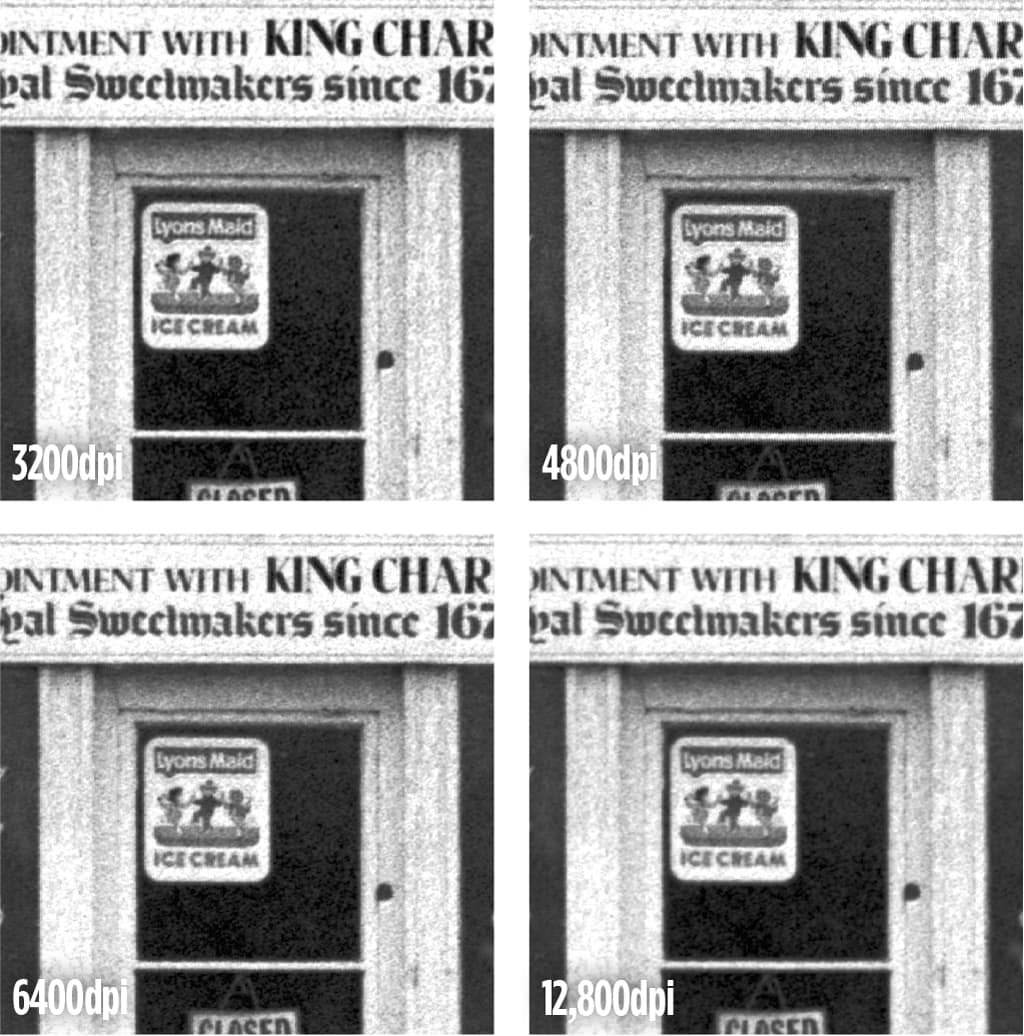 Looking at our test black & white scans from a 35mm negative, the 3200dpi version displays the best overall sharpness, with excellent detail in both highlight and shadow areas. The film grain is sharp and crisp, which indicates that the film holder was well aligned, thanks to the height adjusters. The 6400dpi scans are equally impressive, but lack that extra bite of the 3200dpi scan. The scanner produces the best scans at 3200dpi and 4800dpi resolutions.
Looking at our test black & white scans from a 35mm negative, the 3200dpi version displays the best overall sharpness, with excellent detail in both highlight and shadow areas. The film grain is sharp and crisp, which indicates that the film holder was well aligned, thanks to the height adjusters. The 6400dpi scans are equally impressive, but lack that extra bite of the 3200dpi scan. The scanner produces the best scans at 3200dpi and 4800dpi resolutions.
Although the specifications state a maximum scanning resolution of 6400dpi, you can scan using other values up to 12,800dpi, but at the high dpi settings scans look like interpolated resolutions.
To get the best quality out of any scan, you must apply Unsharp Mask (USM). This can be applied in an image-editing application rather than at the scan stage. For our test scans, we applied a USM value in Photoshop of between 150 and 200. This will vary depending on the image size, with higher resolutions requiring greater values.
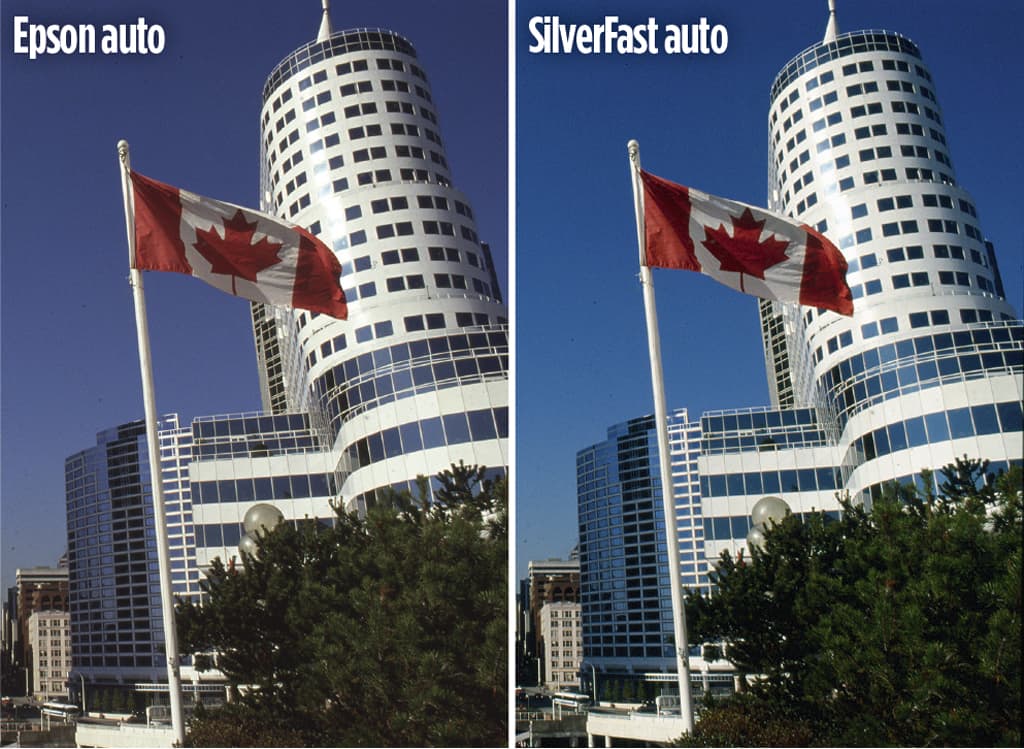
Although the Epson software looks good in isolation, the SilverFast software produces a far better result in its automatic mode
Our verdict
The Epson Perfection V850 Pro scanner is a versatile scanner for both the professional and keen amateur photographer who wants to archive their collection of negatives and slides. There are not many high-quality dedicated film scanners available, so the Epson V850 or V800 may fit the bill. We like the no-fuss controls on the unit, and it gets on with the job in hand without flashing lights and a multitude of buttons found on other scanner models. The V850 shows a marked improvement optically over the V750.
Score: 5 out of 5
V850 vs V800
Which of the two scanners is right for you?
The Epson Perfection V800 Pro scanner is identical in appearance to the V850, but the V800 has an optical sensor. The V850 has a Matrix CCD with micro lens and High Pass Optics, while the V800 does not have the High Pass Optics. For most scanning purposes, you will not see a great deal of difference, but the V850 does produce the better-quality film scans. The V850 is supplied with two sets of film holders, while the V800 just has the one set.
Software included with the V850 is the same as that packaged with the V800, but it also includes X-Rite i1 Scanner and a series of IT8 targets. The colour profiles this software creates should ensure that the V850 produces accurate colours when scanning.

